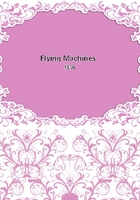
第57章
In connection with these supplemental planes (5), there is employed a gravity influenced weight, the aviator in his seat, for holding them in a horizontal, or substantially horizontal, position when the main plane is traveling on an even keel; and for causing them to tip when the main plane dips laterally, to port or starboard, the planes (5) having a lifting effect upon the depressed end of the main plane, and a depressing effect upon the lifted end of the main plane, so as to correct such lateral dip of the main plane, and restore it to an even keel. To the forward, upper edge of planes (5) connection is made by means of rod (13) to one arm of a bellcrank lever, (14) the latter being pivotally mounted upon a fore and aft pin (15), supported from the main plane; and the other arms of the port and starboard bellcrank levers (16), are connected by rod (17), which has an eye (18), for receiving the segmental rod (19), secured to and projecting from cross bar on seat supporting yoke (7). When, therefore, the main plane tips downwardly on the starboard side, the rod (17) will be moved bodily to starboard, and the starboard balancing plane (5) will be inclined so as to raise its forward edge and depress its rear edge, while, at the same time, the port balancing plane (5), will be inclined so as to depress its forward edge, and raise its rear edge, thereby causing the starboard balancing plane to exert a lifting effect, and the port balancing plane to exert a depressing effect upon the main plane, with the result of restoring the main plane to an even keel, at which time the balancing planes (5), will have resumed their normal, horizontal position.
When the main plane dips downwardly on the port side, a reverse action takes place, with the like result of restoring the main plane to an even keel. In order to correct forward and aft dip of the main plane, fore and aft balancing planes (20)and (23) are provided. These planes are carried by transverse rock shafts, which may be pivotally mounted in any suitable way, upon structures carried by main plane. In the present instance, the forward balancing plane is pivotally mounted in extensions (21) of the frame (22) which carries the forward, manually operated, horizontal ascending and descending plane It is absolutely necessary, in making a turn with an aeroplane, if that turn is to be made in safety, that the main plane shall be inclined, or "banked," to a degree proportional to the radius of the curve and to the speed of the aeroplane. Each different curve, at the same speed, demands a different inclination, as is also demanded by each variation in speed in rounding like curves. This invention gives the desired result with absolute certainty.
The Sellers' Multiplane.
Another innovation is a multiplane, or four-surfaced machine, built and operated by M. B. Sellers, formerly of Grahn, Ky., but now located at Norwood, Ga. Aside from the use of four sustaining surfaces, the novelty in the Sellers machine lies in the fact that it is operated successfully with an 8 h. p. motor, which is the smallest yet used in actual flight. In describing his work, Mr. Sellers says his purpose has been to develop the efficiency of the surfaces to a point where flight may be obtained with the minimum of power and, judging by the results accomplished, he has succeeded. In a letter written to the authors of this book, Mr. Sellers says:
"I dislike having my machine called a quadruplane, because the number of planes is immaterial; the distinctive feature being the arrangement of the planes in steps; a better name would be step aeroplane, or step plane.
"The machine as patented, comprises two or more planes arranged in step form, the highest being in front. The machine I am now using has four planes 3 ft. x 18 ft.; total about 200square feet; camber (arch) 1 in 16.
"The vertical keel is for lateral stability; the rudder for direction. This is the first machine (so far as I know) to have a combination of wheels and runners or skids (Oct. 1908). The wheels rise up automatically when the machine leaves the ground, so that it may alight on the runners.
"A Duthirt & Chalmers 2-cylinder opposed, 3 1/8-inch engine was used first, and several hundred short flights were made.
The engine gave four brake h. p., which was barely sufficient for continued flight. The aeroplane complete with this engine weighed 78 pounds. The engine now used is a Bates 3 5/8-inch, 2-cylinder opposed, showing 8 h. p., and apparently giving plenty of power. The weight of aeroplane with this engine is now 110 pounds. Owing to poor grounds only short flights have been made, the longest to date (Dec. 31, 1910) being about 1,000 feet.
"In building the present machine, my object was to produce a safe, slow, light, and small h. p. aeroplane, a purpose which Ihave accomplished."